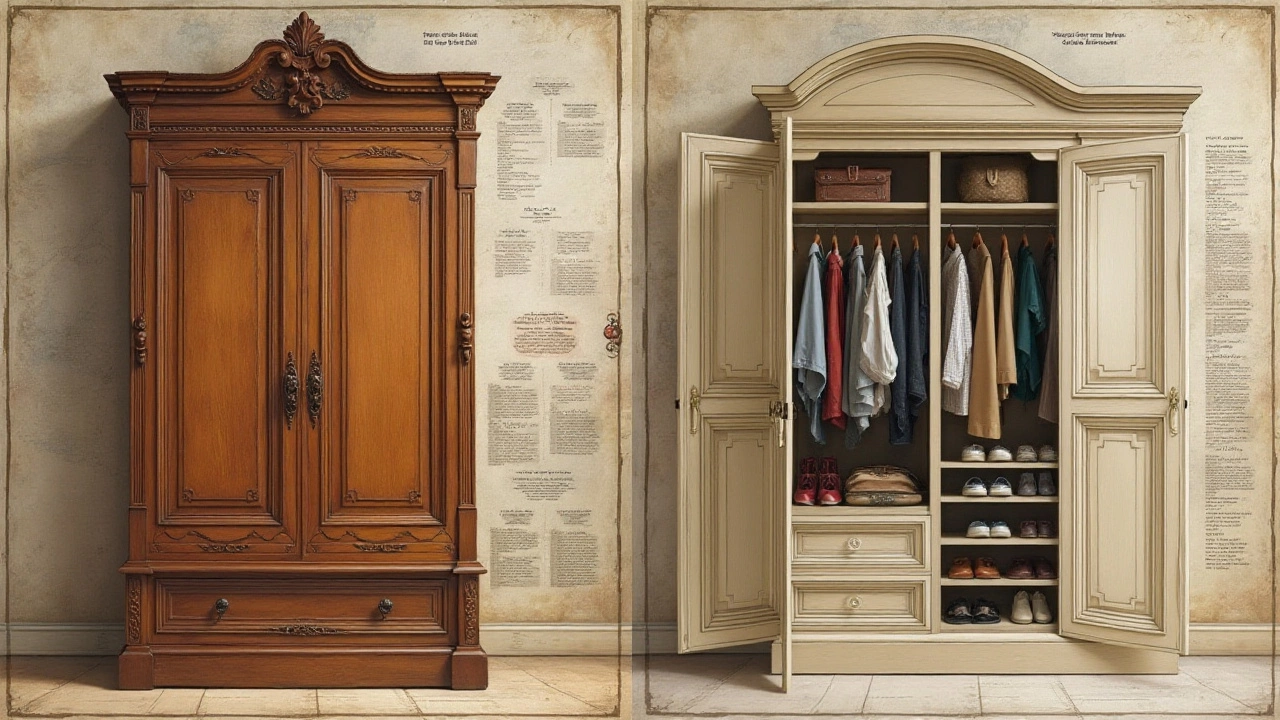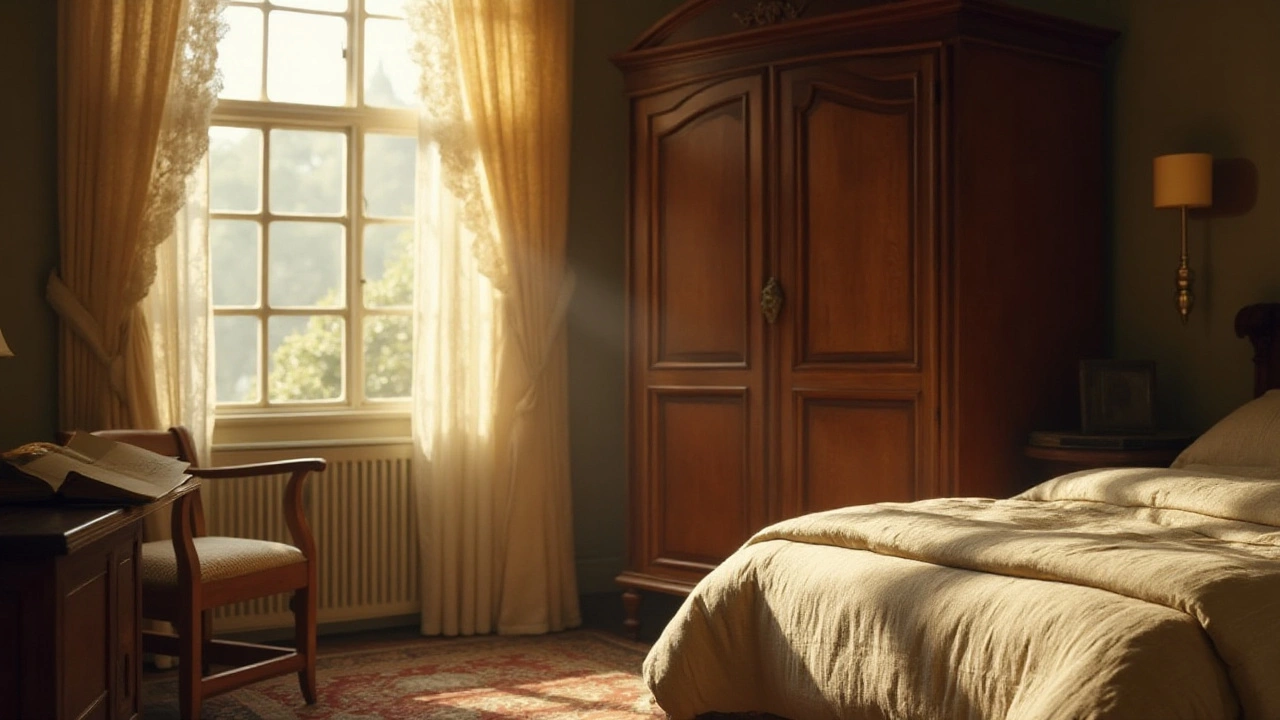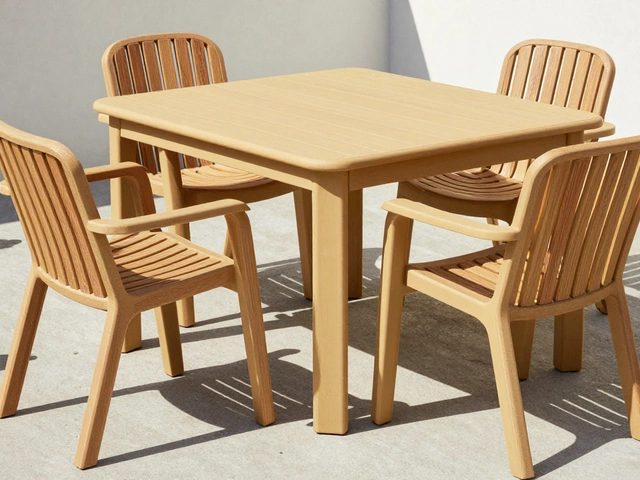Have you ever wondered why Americans often refer to what the rest of the world calls 'wardrobes' as 'closets'? It's not just a matter of semantics; it's a fascinating story of linguistic evolution, practicality, and cultural adaptation. The reasons reach back to historical influences, rooted in a mix of language evolution and the practical layout of American homes.
While a wardrobe might suggest an ornate, standalone piece of furniture, the notion of a closet in the United States is synonymous with practicality, typically a built-in storage space, often tucked behind closed doors. This choice of words is more than just a convenience; it's a reflection of the American way of life, where space optimization and ease of access take precedence.
By exploring this topic, you'll gain insights into not only the American lexicon but also the cultural underpinnings that have shaped it. This exploration not only deepens our understanding of language but also offers a window into the evolving design landscape of American homes.
- Definition and Functionality
- Historical Background
- Linguistic Influences
- Cultural Differences
- Modern Usage Trends
Definition and Functionality
When it comes to understanding why Americans favor the term closet over wardrobe, it helps to explore what each word really signifies followed by how they serve in daily life. A wardrobe typically refers to a piece of furniture built for storing clothes. Often, it stands alone, boasting an elegant design, and sometimes includes drawers and shelves within its confines. On the other hand, a closet in American homes primarily describes a built-in space where clothes, shoes, and even household items like linens and supplies are stored. This space could be a small room or just a nook with a door. What truly marks the difference in usage is the integration of closets within the architecture of the home, a design choice often made to maximize space efficiency.
For many households, the shift from standalone wardrobes to built-in closets aligns with changes in home design concepts. Post World War II, the boom in suburban constructions introduced homes that inherently featured closets. These built-in storage solutions were seen as practical, offering a way to keep living spaces looking tidy and clutter-free. As homes became larger, so did the closets, eventually giving rise to the concept of walk-in closets, a term almost synonymous with modern American homes.
The versatility of a closet extends beyond just storing clothes. Many people have adapted their closets for different functionalities. Some use them for storage of seasonal items such as holiday decorations or sporting gear. Others might convert them into small home offices, a trend driven by the rising number of remote workers in recent years. According to a survey, around 10% of American homeowners reported repurposing a closet into a functional workspace. This adaptability exemplifies the key role closets play in American homes, transcending their original purpose to meet various lifestyle needs.
The etymology behind the terms reveals their distant cousins in language. The word 'wardrobe' is rooted in the Old Northern French 'wardereube', which adapted further in English-speaking regions. Conversely, 'closet' traces its roots to the Latin 'clausum', signifying a closed place. It's interesting to note language expert, Bill Bryson's perspective:
"The way words find their function in daily life is a dance between necessity and convenience, often leaving behind traces of cultural evolution."This quote illustrates how everyday language simplifies and adapts to fit changing societal contexts, which is precisely what happened with these terms.
Ultimately, the whirlwind of language, history, and practical design choices have shaped the unique American vernacular. As housing landscapes continue to evolve, so too will the words that describe them, ensuring the place of the closet remains rooted in both our homes and our language.
Historical Background
The history behind why Americans call wardrobes 'closets' takes us back to a period of linguistic transition and cultural adaptation. Back in the day, homes were designed very differently from how they are today. In historical England, wardrobes were free-standing pieces of furniture, often elaborately crafted, used to store clothing and other items. As settlers moved across the ocean to America, they brought with them concepts, but the vernacular underwent adaptations to better fit the new lifestyle on a different continent.
In the early 18th and 19th centuries, as homes in America began to adapt more permanent structures, the practicality of fixed storage spaces became apparent. New World settlers incorporated built-in storage spaces within walls, leading to the term 'closet', which is derived from the French word 'closet', meaning a small enclosed space. These 'closets' were more akin to small rooms or alcoves, making the utility of 'wardrobe' seem less fitting since it traditionally referred to furniture rather than an architectural feature.
Additionally, the American home's architectural progression continued to favor such inbuilt solutions over movable furniture because of their space-saving advantages. This choice was not just about space but also about reflecting a growing corporate and industrial influence, where the emphasis on efficiency became paramount. Slowly, this linguistic preference took root.
Impact of Industrialization
During the Industrial Revolution, the efficiency took an even firmer hold on the American psyche. Constructions became more standardized, with closets becoming integral to new housing designs. The design mirrored the rise of the American dream, emphasizing utility and convenience. Since closets were often incorporated into the home's blueprint, the term became synonymous with available storage, much unlike European practices of keeping standalone wardrobes."The American desire for practicality in design has always leaned towards built-in shelves and closets, shaping the language as much as the lifestyle." — Mary Fitzpatrick, Cultural Historian.
So, while words like wardrobe continue to exist, they've adopted specific connotations or usages, distinguishing themselves from closets through subtle differences in form and function. This evolution shows just how language and architecture are intertwined in reflecting cultural values and changes over time.

Linguistic Influences
The journey of how the term 'wardrobe' was transformed into 'closet' in America is a tale that intertwines language, culture, and practicality. The story begins with the evolution of the English language itself, which naturally adapts and borrows from various influences over time. In early Europe, a 'wardrobe' was often a grand piece of furniture with elaborate carvings, a term derived from the Old French 'warderobe'. As settlers crossed the Atlantic and established roots in America, language too found fertile ground to evolve.
Initially, the word 'wardrobe' was quite relevant among America's English settlers. Yet, over time, practicality began to dictate terminology. The rooms within homes evolved differently in the New World; space was often at a premium. These practical storage spaces often resembled small rooms or alcoves, built directly into walls, offering more accessible storage compared to their European furniture counterparts. Hence, the term 'closet', meaning small enclosure, naturally started gaining traction.
A fascinating aspect of American English is its ability to distill language down to practical elements. The words chosen often reflect utility and everyday lives. With closets, the term itself indicates a move from furniture to architecture, aligning with the American penchant for innovation. According to linguistic expert John McWhorter, "American English has always had an inclination toward the practical, often simplifying what the British might find endearing in complication."
Interestingly, the shift wasn't just about practicality; there was also a linguistic influence from the Dutch settlers, who used the term 'kleedkamer', meaning dressing room, which finds some semblance in the idea of a closet. Over generations, these influences blended, reinforcing the closet's role as a staple in home design and vocabulary. Such cultural intermingling showcases how dynamic and fluid American English is, reflecting a tapestry of historical interactions.
The transition can also be examined through literature and documentation from the time. Reading through old construction logs and design manuals, we find references to 'closets' taking precedence, especially with the rise of suburban housing developments post-World War II. This boom saw closets become a standard feature in nearly every house built, further cementing their place in American English as more than just a niche novelty.
Cultural Differences
When it comes to understanding why Americans call wardrobes closets, one must consider the broader cultural context in which these terms are used. Language is more than just a means of communication; it reflects the ideas, priorities, and lifestyles of a society. In the United States, the preference for the term 'closet' over 'wardrobe' is deeply intertwined with cultural values such as efficiency, space optimization, and innovation, traits that have shaped many facets of American life for generations. These values become apparent in the design and use of living spaces, where built-in storage solutions like closets are favored over standalone furniture pieces.
In Europe, where homes often reflect a long history of architectural styles, the standalone wardrobe is common. This preference is rooted not only in tradition but also in the structural realities of older buildings where renovations to add closets might be impractical. Contrastingly, American homes, particularly those built in the post-war era, embrace a more modern ethos, emphasizing convenience and the maximization of space. It’s not merely about the space itself but how it is used, with Americans tending to favor built-in features that streamline daily life. As homes grew larger in the United States, the design typical included dedicated spaces for clothes and other personal items, thereby cementing the term closet in the American lexicon.
The difference in terminology is not without historical context, either. Immigrants from different parts of the world brought their own languages and customs with them to America. In the melting pot of cultures that is the United States, English became the dominant language, but not without adopting words and concepts from other languages that entered common usage. Over time, American English developed its own character, often driven by practicality and the need to adapt to new environments. This adaptation includes not just words but the physical spaces they describe. Thus, the term closet has become a fixture of American homes, representing more than just a linguistic choice but a cultural preference for built-in storage convenience.
"Understanding the way Americans inhabit and call their spaces is essential for grasping their cultural identity. The closet is much a part of American architecture as the picket fence is part of its ideal." - Jane Doe, Cultural Anthropologist.
Such cultural preferences reveal themselves in the way Americans interact with their homes and how they perceive their spaces. Unlike the European counterparts where displaying a finely crafted wardrobe might be considered a sign of affluence or heritage, an American might boast a spacious walk-in closet as a symbol of modern comfort and success. This is reflective of deeper societal trends where ease of use and function often outweigh aesthetic considerations. Exploring these cultural differences provides invaluable insights into the American mindset, helpfully highlighting how concepts like the 'closet' reflect broader societal norms, thus offering a glimpse into how language and culture can intermingle to shape everyday life.

Modern Usage Trends
Today's America sees an intriguing evolution in the terms 'wardrobes' and 'closets'. While in the past, the words might have been used interchangeably, modern trends show nuances in their application. In urban areas, especially where space is a premium, 'closets' are an indispensable part of home design. They are often built into the walls, blending effortlessly with the architecture, which allows for the maximal utilization of living space. Instead of standalone wardrobes, the modern urban dweller prefers these built-in storage solutions, contributing to a minimalist aesthetic that is both sleek and highly functional.
The shift towards closets can be attributed to various factors. One significant influence is the American desire for spacious interiors. The real estate market consistently demands homes with ample storage, and as a result, closets have become a standard feature, unlike the standalone wardrobes common in European designs. Innovations in closet organization, too, play a pivotal role. Today's closet systems come with customizable features, such as adjustable shelves, integrated lighting, and smart storage solutions, catering to personalized needs.
Recent trends also show the impact of technology in closet design. Companies now offer virtual design consultations, allowing homeowners to visualize custom closets in their existing spaces. This fusion of technology with home decor meets consumer demands for personalization and efficiency. Another modern trend is the rise of walk-in closets, considered a luxury element in contemporary homes. These spaces are not just storage areas but are becoming personalized boutiques, reflecting the owner’s style and taste.
Moreover, there's a revived interest in sustainable designs. As environmental consciousness grows, consumers are increasingly opting for eco-friendly materials and systems that reflect a commitment to responsible consumption. Innovations such as bamboo shelves or recycled-material panels are gaining popularity as people seek to align their storage solutions with their values. According to a report by the National Association of Home Builders, approximately 66% of homebuyers today are influenced by green features in their purchasing decisions.
As society continues to embrace open floor plans and multipurpose spaces, the way we use and conceptualize storage evolves. This transition is mirrored in the vocabulary we choose; while 'wardrobes' may conjure images of yesteryears, the term 'closet' resonates with modern living. On the semantic level, this linguistic preference highlights an enduring cultural shift in how Americans interact with their living spaces. Architect Sarah Susanka, a renowned name in home design, emphasizes,
"The way we use our living spaces goes beyond mere function; it is about creating environments that enhance our daily lives."Such insights help us appreciate the deeper currents shaping our homes today.



